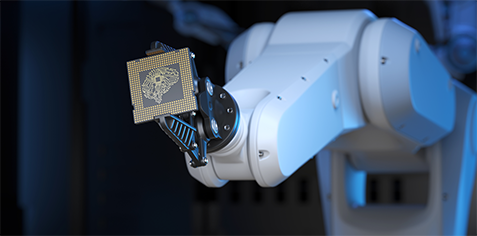Services
- Home
- Services

SERVICES WE PROVIDE
We help healthcare companies extract value from unstructured data, in search of business insights. Where we leverage machine learning/ artificial intelligence, natural language processing, and deep learning technologies to meet our client’s requirements
Business understanding
Data acquisition and understanding
Modeling
Customer acceptance



Services
Business Understanding
We ensure your project is aligned with the business objectives and provides meaningful insights that can drive business value.
- We work closely with stakeholders to identify the business problem
- Define goals for the project and determine how the success will be measured
- Gather relevant domain knowledge and explore any constraints or limitations that may impact the project
Services
Data acquisition and understanding
Data acquisition or collection, is the process of gathering and extracting data from various sources to be used in a data science project. It is a crucial first step in any data science project as the accuracy and quality of the data acquired will determine the outcome and usefulness of the project.
- We gather and extract data from various sources, using a variety of methods from structured and unstructured sources
- Data is then pre-processed, EDA is performed, and transformed into a format that can be analysed by our tools or algorithms
- Determine if it’s adequate for model development






Services
Modeling
- We select a suitable algorithm or statistical method, based on the nature of the data and problem being addressed
- Train the model using a subset of the data
- Tune the model’s parameters to achieve best possible fit to data
- Evaluate the performance of model on new/ unseen data, to ensure it generalizes well
- Test and refine model using various ML techniques, such as iterating on model architecture, adjusting hyperparameters, or feature engineering
Services
Deployment
- Sed ut perspiciatis unde omnis
- Sed ut perspSed ut perspicia
- Sed ut perspiciatis unde omnis



Services
Customer Acceptance
In this final stage, our goal is to confirm that the data pipeline, the model, and the production deployment satisfies the needs of the customers and solves the business problem addressed in the first stage. There are two steps in this stage:
- System validation: Confirm that the data pipeline, and model, satisfy the business use case and meet the needs of customers
- Project hand-off: Transfer the project to the group that will manage it in production






Services
Data Governance, Integrity and Quality
To ensure data governance, data integrity, and data quality in healthcare, organizations typically establish policies and procedures for data management, implement data validation and verification processes, and conduct regular audits to monitor data quality and integrity.
- We develop and implement data management and integrity procedures
- Conduct data validation and verification processes to ensure data accuracy and completeness
- Ensure compliance with regulatory requirements related to data integrity and management
Services
Predictive Maintenance
Predictive maintenance in the healthcare industry is a maintenance strategy that uses data analysis and machine learning algorithms to predict when equipment or systems are likely to fail, allowing for maintenance to be performed proactively before a failure occurs.
Condition monitoring has been widely used for many years. However, machine learning has some advantages over condition monitoring:
- Machine Learning can be used to develop predictive maintenance models that can help identify when a piece of equipment is likely to fail, allowing maintenance teams to take corrective action before a failure occurs. Condition Monitoring, on the other hand, is typically used to detect and diagnose equipment faults once they have already occurred
- Machine Learning can be used to optimize equipment performance by analyzing data from sensors and other sources to identify patterns and trends that may be missed by traditional Condition Monitoring techniques
- Machine Learning can be more cost-effective than traditional Condition Monitoring techniques, especially for complex systems that require extensive data analysis. By analyzing large amounts of data, Machine Learning algorithms can identify correlations and patterns that may be missed by manual analysis
- Machine Learning can be used to analyze data from a wide range of sources, including sensors, logs, and maintenance records. This flexibility allows machine learning algorithms to adapt to new and changing equipment and operating conditions
